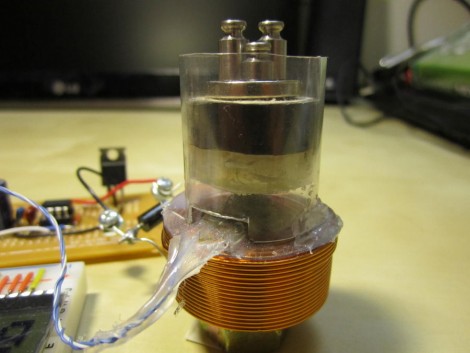What uses a fire extinguisher, a bike pump, and provides hours of probation, community service, and possibly jail time? If you said an automatic graffiti writer you’re correct! [Olivier van Herpt] calls this little job the Time Writer. We call it defacing property… but tomato, tomahto.
Details are a bit scarce, but you get a fine overview of the system from the video after the break. [Olivier] tagged the post as Arduino; it’s obviously running the dot matrix printer made up of seven solenoid valves on a metal rod. These are fed ink via a tube connected to a fire extinguisher which serves as the reservoir. The bike pump is used to pressurize the enclosure so that a pump isn’t necessary when out and about.
Obviously you shouldn’t try this at home, but let’s talk about possible improvements as an academic exercise. First off the mix of the ink/paint needs to be reigned in to get rid of the dripping. We’d also like to see the inclusion of some proper spray can nozzles to tidy up the results. That, paired with an IMU board should be able to smooth out the printed designs.
This might make an interesting add-on to that rainbow graffiti writer.

















